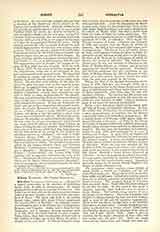

Giffard, GODFREY, Bishop of Worcester, b. about 1235; d. January 26, 1301. He was the son of Hugh Giffard of Boyton in Wiltshire, and Sybil, the daughter and coheiress of Walter de Cormeilles. Hiselder brother Walter became Archbishop of York (d. 1279). During the earlier part of his life his success was bound up with that of his brother. When in May, 1264, Walter was elected Bishop of Bath and Wells, Godfrey became canon and subsequently archdeacon of Wells; he also held many other benefices, although only in minor orders, and, as his enemies alleged, not learned. When in August, 1265, Walter became chancellor, Godfrey in 1266 was appointed Chancellor of the Exchequer, with leave to appoint a substitute to act during his absence; and when in October, 1266, Walter was translated to York, Godfrey succeeded him as Chancellor of England, and received further benefices from the new Archbishop of York, becoming archdeacon of York and rector of Adlingfleet in 1267. When Bishop Nicholas of Ely was translated from the See of Worcester to that of Winchester, Godfrey was elected by the monks; he received the temporalities of his see in June, 1268. One of his first acts as bishop-elect was to obtain licence to continue the work, begun by Walter Cantelupe, of building and fortifying Hartlebury Castle, which has ever since been the principal palace of the bishops of Worcester. His consecration took place at Canterbury, September 23, 1268, and his enthronement December 25. During his chancellorship a parliament was held at Marlbridge (52. H. 3) where many useful laws were passed for restraining the abuse of distresses, regulating the incidence of tenure, and improving civil and criminal procedure; the knowledge of general jurisprudence they display is remarkable, and if he did not frame them himself, he deserves credit for having had the wit to employ the superior men who did. He continued in office as chancellor until October 28, 1269, when he handed over the seal to the king.
As bishop Giffard devoted himself to the care of his diocese which he ruled for nearly thirty-four years. In the course of those years two affairs caused him considerable trouble: the disputes with the monks of Worcester cathedral, and that with Malvern Priory. The Worcester feud lasted down to the bishop’s death, and reached such a height that when, in 1300, Archbishop Winchelsey visited the priory, the monks presented a formal accusation against the bishop containing thirty-six articles of varying importance to which Giffard’s satisfactory answers are still extant. The quarrel appears to date from 1288 when the monks considered that the rights of the church of Worcester had been infringed by the bishop’s refusal to allow their precentor to summon those who were to be ordained at an ordination at Westbury. The feeling aroused was intensified by the bishop’s attempt, in 1288, to annex the churches in his gift to the prebends in the church of Westbury. This was eventually decided in the bishop’s favor in the Arches Court in 1297. Relations were, moreover, strained because of the unwillingness of the priory to admit the bishop’s visitations. The difficulty with the priory at Great Malvern was even more complicated. The cause was a claim made by the priory to be independent of the bishops of Worcester, and dependent upon the Abbot of Westminister. The relations between the two houses had been settled in 1217. Giffards predecessors had had continual trouble with the same priory. The present struggle with Richard of Ware, Abbot of Westminster lasted from 1279 until 1283 and was not really ended then. The climax was reached in September, 1282, when Giffard, as visitor, at the request of some of the monks, deposed the unworthy prior, William of Ledbury. A violent conflict followed, full of incidents, appeals, and counter-appeals and finally the king had to intervene to bring about a compromise.
Besides building the castle at Hartlebury, and rebuilding the church there, Giffard built magnificent mansions at Wick and Alvechurch. Moreover he ornamented the eastern part of the cathedral with the small columns of marble having joints of gilded brass, which form one of the most graceful characteristics of the present choir and Lady chapel. Even after retiring from the chancellorship he is still found exercising judicial functions, as when, in 1272, with Roger Mortimer he enquired into the injuries done by the townspeople of Oxford to the scholars; and, in 1278, he was at the head of the justices itinerant for the counties of Hereford, Hertford, and Kent. He was buried on February 4 in his cathedral church (Ann. Monast., IV, 551).
EDWARD MYERS

